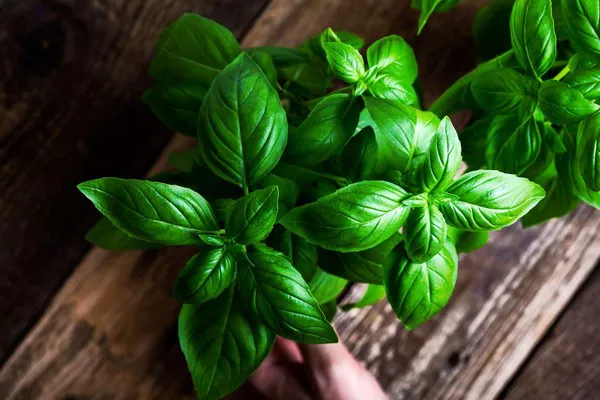Pests are a persistent challenge for homeowners, farmers, and gardeners alike. They can cause extensive damage to crops, structures, and landscapes. To effectively manage and control pests, it’s crucial to understand their needs and preferences.
Pests and Their Needs
Pests encompass a wide range of organisms, including insects, rodents, fungi, and more, all of which have specific requirements for survival and reproduction. By understanding what pests need, we can disrupt their life cycles and reduce their impact on our lives and livelihoods.
1. Food
Food is a fundamental requirement for pests. Different pests have varying dietary preferences. For instance, common household pests like cockroaches and ants are attracted to sugary and starchy foods, while rodents seek out grains and seeds. Agricultural pests, such as aphids and caterpillars, feed on plants. By eliminating or managing access to their food sources, we can deter pests from infesting our homes, gardens, and crops.
2. Water
Water is another critical need for pests. Most pests, including insects and rodents, require moisture for survival. In the case of mosquitoes, their larval stage develops in stagnant water. Termites are known for their ability to damage wooden structures, but they also need moisture to thrive. Proper moisture control, such as fixing leaks and maintaining dry conditions, can discourage pests from establishing themselves in our environments.
3. Shelter
Shelter provides pests with protection from predators, harsh weather conditions, and potential threats. Many pests, such as spiders and bedbugs, seek shelter in cracks, crevices, and hidden areas within our homes. Agricultural pests often overwinter in crop residues or sheltered locations. Regular inspection and sealing of entry points can help prevent pests from finding refuge in our homes and farms.
4. Warmth
Temperature plays a vital role in the life cycles of pests. Insects, for instance, are ectothermic, meaning their body temperature is regulated by the environment. Warmer temperatures can accelerate their development and reproduction. This is particularly relevant for pests like mosquitoes and ticks, which thrive in warmer climates. Understanding the temperature preferences of specific pests can aid in predicting and managing their populations.
5. Breeding Sites
Pests require suitable breeding sites to reproduce. Mosquitoes lay their eggs in stagnant water, while flies prefer decaying organic matter. Understanding the breeding habits of pests can help us target these sites for elimination. Regular maintenance of yards, removal of standing water, and proper waste disposal can reduce the availability of breeding sites for pests.
6. Access Points
Pests need a way to enter our living spaces, gardens, and farms. Identifying and sealing access points is crucial for pest prevention. Rats and mice can enter through small openings, while ants can find their way in through cracks in walls or windows. By blocking these access points, we can limit the intrusion of pests.
7. Host Plants
Many agricultural and garden pests rely on specific host plants for sustenance. Aphids, for example, feed on the sap of various plants, damaging crops in the process. Crop rotation and the use of resistant plant varieties can disrupt the relationship between pests and their host plants, reducing pest pressure.
8. Predators and Natural Enemies
Pests are not without their own set of challenges. They often face predators and natural enemies that keep their populations in check. Ladybugs and lacewings are known to feed on aphids, while parasitoid wasps can be used as biological control agents against caterpillar pests. Encouraging the presence of these beneficial organisms can help manage pest populations.
Pest Management Strategies
Now that we have a better understanding of what pests need to thrive, let’s explore some effective pest management strategies:
1. Integrated Pest Management (IPM)
Integrated Pest Management is a holistic approach that combines various pest control methods to minimize pest damage while minimizing the impact on the environment. IPM includes cultural practices, biological control, chemical control (used as a last resort), and monitoring. By targeting multiple aspects of what pests need, IPM can be highly effective in pest management.
2. Proper Sanitation
Maintaining clean and hygienic living spaces, kitchens, and agricultural areas can greatly reduce the availability of food and water for pests. Regular cleaning, proper food storage, and waste management are essential components of pest prevention.
3. Moisture Control
Addressing moisture issues such as leaks, humidity, and drainage problems is critical for pest prevention.
By eliminating excess moisture, you can make your environment less hospitable to pests like termites, roaches, and silverfish.
4. Exclusion
Sealing cracks, gaps, and entry points in structures can prevent pests from gaining access to indoor spaces. This is especially important for pests like rodents and ants, which can find their way through even tiny openings.
5. Natural Predators
Encouraging the presence of natural predators and beneficial insects in your garden or agricultural fields can help keep pest populations in check. Planting diverse vegetation and avoiding the use of broad-spectrum pesticides can support these beneficial organisms.
6. Trap and Monitor
Using traps and monitoring systems can help detect and manage pest infestations. This proactive approach allows for early intervention and can prevent pest populations from becoming established.
7. Pest-Resistant Plants
Incorporating pest-resistant plant varieties in your garden or farm can reduce the attractiveness of your crops to specific pests. This can be particularly beneficial for managing agricultural pests.
8. Regular Inspections
Frequent inspections of your property, including both indoor and outdoor spaces, can help identify pest issues early on. Early detection allows for more effective and less invasive pest control measures.
Conclusion
Understanding what pests need the most is the first step toward effective pest management and prevention. By targeting the key elements of food, water, shelter, warmth, breeding sites, access points, host plants, and natural enemies, we can disrupt the conditions that favor pest infestations. Implementing a combination of pest management strategies, including Integrated Pest Management, proper sanitation, moisture control, exclusion, and the support of natural predators, can help us reduce the impact of pests on our homes, gardens, and crops. In the ongoing battle against pests, knowledge is a powerful tool.


